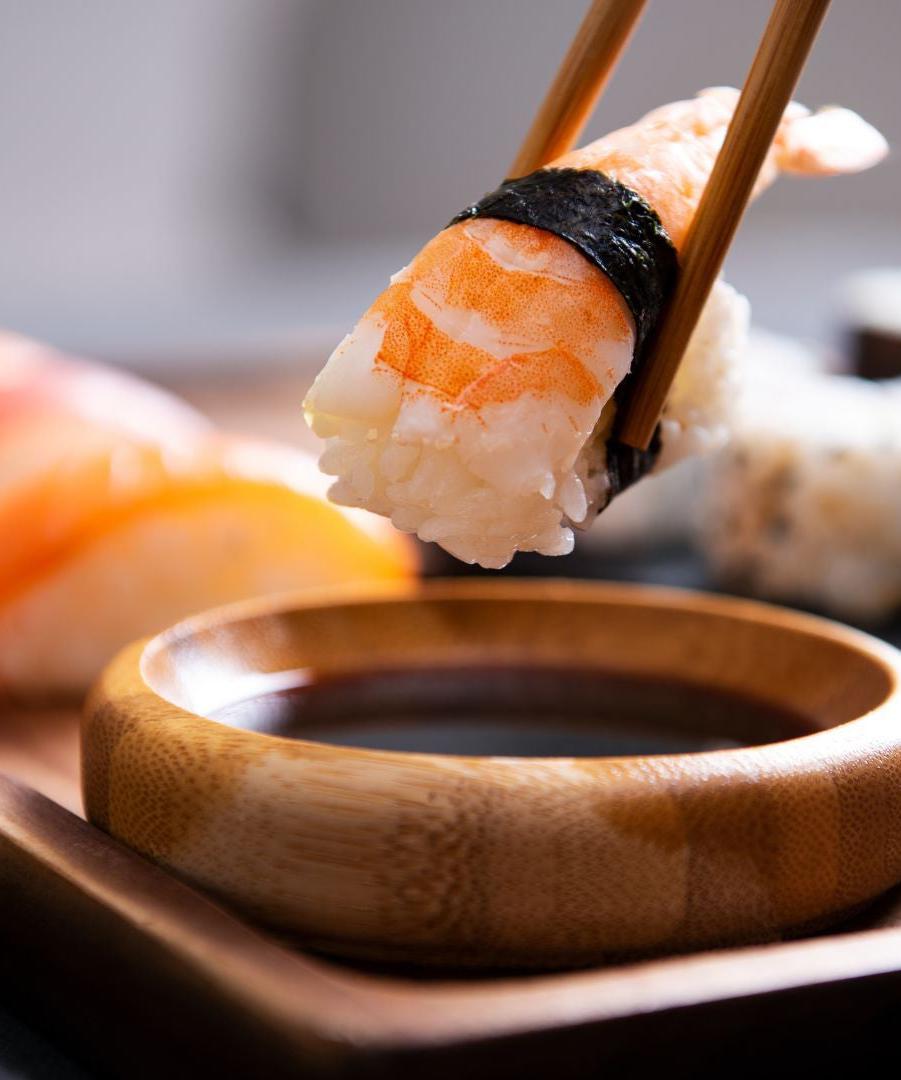Overview of Oyster Sauce and Fish Sauce
In Southeast Asia’s active kitchens, oyster sauce and fish sauce are essentials. Oyster sauce brings a rich umami kick with its thick texture, while fish sauce offers a sharp salty bite. They’ve seasoned Asian cuisines for ages, each adding its unique twist to dishes.
Exploring “oyster sauce vs fish sauce” is to understand their balance of sweet and salty nuances. We’ll take a look at the backgrounds, how they’re made, and their use in cooking.
First, oyster sauce. Its origin story is a happy accident from a vendor in Guangdong province, China, who left his oyster soup simmering too long and discovered the resulting thick, savory sauce. It’s now made by cooking oysters (or oyster extracts) until they caramelize, and then seasonings are added.
Fish sauce, on the other hand, is an ancient Roman condiment resurrected in the kitchens of Southeast Asia. It’s simpler: just fermented fish and salt, aged until the mixture becomes a clear, amber liquid.
In the kitchen, oyster sauce is often a glaze or an addition to stir-fries, while fish sauce is more of a background player, enhancing soups and marinades with its briny depth.
Understanding these sauces is crucial for anyone diving into Southeast Asian cuisine. They’re not just about saltiness or sweetness; they’re about the depth they add to your cooking. So, whether you’re stirring up a quick vegetable stir-fry or simmering a pot of pho, reaching for the right bottle can define your dish.
What is Oyster Sauce?
A Culinary Gem The tale of oyster sauce has its roots in the energetic kitchens of southern China. A simple cook, Lee Kum Sheung, inadvertently let his pot of oyster soup simmer a tad too long. The outcome was a dense, tasty sauce that pleasantly caught him off guard. This serendipitous mishap marked the inception of an essential component in Chinese cuisine.
Oyster Sauce Essentials
Oyster sauce is concocted from extracts of oyster, a dash of spices, and occasionally, cornstarch to add body. The umami from the oyster juices melds seamlessly with a hint of sweetness and a touch of salt, delivering a distinct taste that elevates a meal.
The Making of Oyster Sauce
Traditional vs Modern Production Methods
Traditionally, oyster sauce was a result of simmering oysters in brine until a thick, flavorful sauce emerged. Modern methods, however, often involve oyster extracts, soybeans, and other additives to achieve a similar flavor.
Variations Across Brands and Regions
From specialty stores in Asia to the aisles of western supermarkets, oyster sauce has found its place. Commercial oyster sauces may vary in sodium content and consistency, but the essence remains the same – a delicious addition to your pantry.
Culinary Uses of Oyster Sauce
Oyster Sauce in Stir-Fries
Imagine a sizzling wok, where broccoli and noodles dance with a drizzle of oyster sauce. The sauce plays a crucial role in stir fry dishes, bringing an earthy flavor that binds all ingredients together.
Oyster Sauce as a Marinade
A marinade of oyster sauce, ginger, and a hint of lime juice can transform any protein into a culinary masterpiece. The umami taste and thick consistency make it a preferred choice for marination.
What is Fish Sauce?
Fish sauce, often called ‘nam pla’ in Thailand and ‘nuoc mam’ in Vietnam, is more than just a seasoning. Its roots stretch back to ancient practices of food preservation through fermentation. This time-honored process involves anchovies or similar small fish mingling with salt for several months or even years. What emerges is a complex condiment that brings a robust umami punch with an underlying fishiness that’s more of a whisper than a shout.
Let’s not beat around the bush: this stuff is salty. But it’s the kind of salty flavor that transforms a dish, adding layers of flavor that can turn the ordinary into the extraordinary. In the culinary landscape of Southeast Asia, it’s as ubiquitous as ketchup is in a typical American diner, but it carries with it a history that’s anything but ordinary.
The Production of Fish Sauce
The Art of Fermenting Fish
The artistry of fish sauce lies in its fermentation. In large barrels, layers of fish and salt undergo a transformation, with the sun and time as their only allies. The result is a clear, amber liquid that captures the essence of the sea.
Regional Differences in Fish Sauce
From the shores of Vietnam to the islands of Thailand, fish sauce varies in flavor intensity and saltiness. Each region takes pride in its version, with family recipes passed down through generations.
Culinary Applications of Fish Sauce
Enhancing Flavors with Fish Sauce
A splash of fish sauce can elevate a simple broth or a complex curry, adding a depth of flavor that is hard to replicate. Its ability to enhance the savory notes of a dish is unparalleled.
Fish Sauce in Dips and Dressings
Fish sauce is not just for cooking. It’s a star in dips and dressings, where it balances sweetness and acidity, often with a squeeze of lime juice and a hint of chili.
Oyster Sauce vs Fish Sauce: Flavor Profiles
Oyster sauce, a staple in many kitchens, brings a savory punch with a subtle sweetness, a bit like a thick, molasses-like cousin to soy sauce. It’s the umami kick that stands out, not so much a seafood essence, but an earthy richness that elevates stir-fries and noodle dishes without stealing the show.
Now, think of fish sauce as the ocean’s own salty condiment, a splash of this pungent liquid can transport a dish to the coastal regions of Vietnamese cuisine. It’s robust, unapologetically briny, with that distinct maritime flavor that whispers rather than shouts, contributing character to a bowl of spring rolls dipping sauce or a pot simmering on low heat.
To sum it up, whether it’s oyster sauce bringing a grounded umami presence or fish sauce with its bracing salute to the sea, these sauces are transformative, offering layers of flavor to an array of dishes. Their clever use can make the difference between a forgettable meal and a memorable culinary experience.
Oyster Sauce vs Fish Sauce: Texture and Consistency
The Syrupy Nature of Oyster Sauce
Oyster sauce is thick, almost like a glaze, which makes it perfect for clinging to the ingredients of a stir-fry or coating a piece of meat evenly.
The Liquid Essence of Fish Sauce
Fish sauce boasts a watery consistency, making it ideal for blending into sauces and marinades, infusing them with its signature salty kick.
Nutritional Comparison
When it comes to livening up a meal, both fish sauce and oyster sauce pack a punch, but they sure do it differently. Fish sauce is your go-to for that unique flavor kick that’s bold without being overpowering. Just a few drops can wake up a dish with its distinct aroma, not to mention it’s a great fit for those avoiding gluten. Now, let’s chat about oyster sauce. It’s got this rich, savory flavor that can make your stir-fry sing, and it often plays nicely with hoisin sauce if you’re looking to double down on that delicious umami flavor.
But here’s a heads-up: both of these sauces can be pretty high on sodium, so think “small amounts” to keep things balanced. It’s about that boost of flavor without going overboard, you know?
For anyone with food sensitivities, keep your eyes peeled—oyster sauce might hide some wheat or soy in there, and if seafood makes you itchy, well, both these sauces might not be your best pals. On the flip side, if you’re all about that vegan life, hoisin sauce can be a suitable substitute, especially if you’re chasing that umami flavor without the fishy taste.
Let’s talk Worcestershire sauce for a second—it’s got a vibe all its own, and in some dishes, it can step in for fish or oyster sauce, adding a flavorful twist that’s both tangy and slightly sweet. Plus, it usually fits the vegan bill, giving your dishes that certain something without any seafood.
All in all, whether you’re whipping up a quick marinade or simmering a slow-cooked stew, these sauces can add depth and a certain umami that’s just right. Go easy with the pour, and you’re on your way to creating some truly flavorful dishes.
Oyster Sauce vs Fish Sauce in Cooking
Best Practices for Cooking with Oyster Sauce
When cooking with oyster sauce, remember that a little goes a long way. Its rich flavor is best used as a complement, not a centerpiece.
Best Practices for Cooking with Fish Sauce
Fish sauce should be used with a light hand. Its intense saltiness can overwhelm but used judiciously, it imparts a flavor that’s hard to match.
Substituting Oyster Sauce and Fish Sauce
How to Substitute Oyster Sauce for Fish Sauce
If you’re out of fish sauce, a mixture of oyster sauce diluted with water and a pinch of sugar can mimic its flavor profile for some dishes.
How to Substitute Fish Sauce for Oyster Sauce
Conversely, if you need to substitute oyster sauce, a bit of fish sauce with a touch of sugar and a thickening agent like cornstarch can do the trick.
Storing Oyster Sauce and Fish Sauce
Shelf Life and Storage Tips
Both sauces have a long shelf life when stored properly in a cool, dark place. Refrigeration after opening can extend their life even further.
Cost Comparison: Oyster Sauce vs Fish Sauce
Price Points and Budget Considerations
Oyster sauce tends to be pricier due to the cost of oyster extracts. Fish sauce is generally more affordable and widely available.
Exploring Regional Dishes with Oyster Sauce and Fish Sauce
Signature Dishes Using Oyster Sauce
From the classic Cantonese beef stir-fry to the savory oyster soup, oyster sauce adds a rich flavor that is unmistakably Chinese.
Signature Dishes Using Fish Sauce
Vietnamese pho, Thai papaya salad, and Filipino adobo are just a few dishes that showcase the versatility of fish sauce.
Conclusion
In the “oyster sauce versus fish sauce” discussion, there’s no outright champion. Each has its rightful spot on the shelf and brings a distinctive zest to any dish. For anyone in the kitchen, grasping the subtleties of these condiments can elevate your meals, adding layers of flavor. Now, if decision-making isn’t your strong suit, why not drop a line to Pearl River Bridge? With over 60 years of exporting expertise in soy sauces and more, we’re poised to offer you guidance that’s as seasoned as our sauces.




